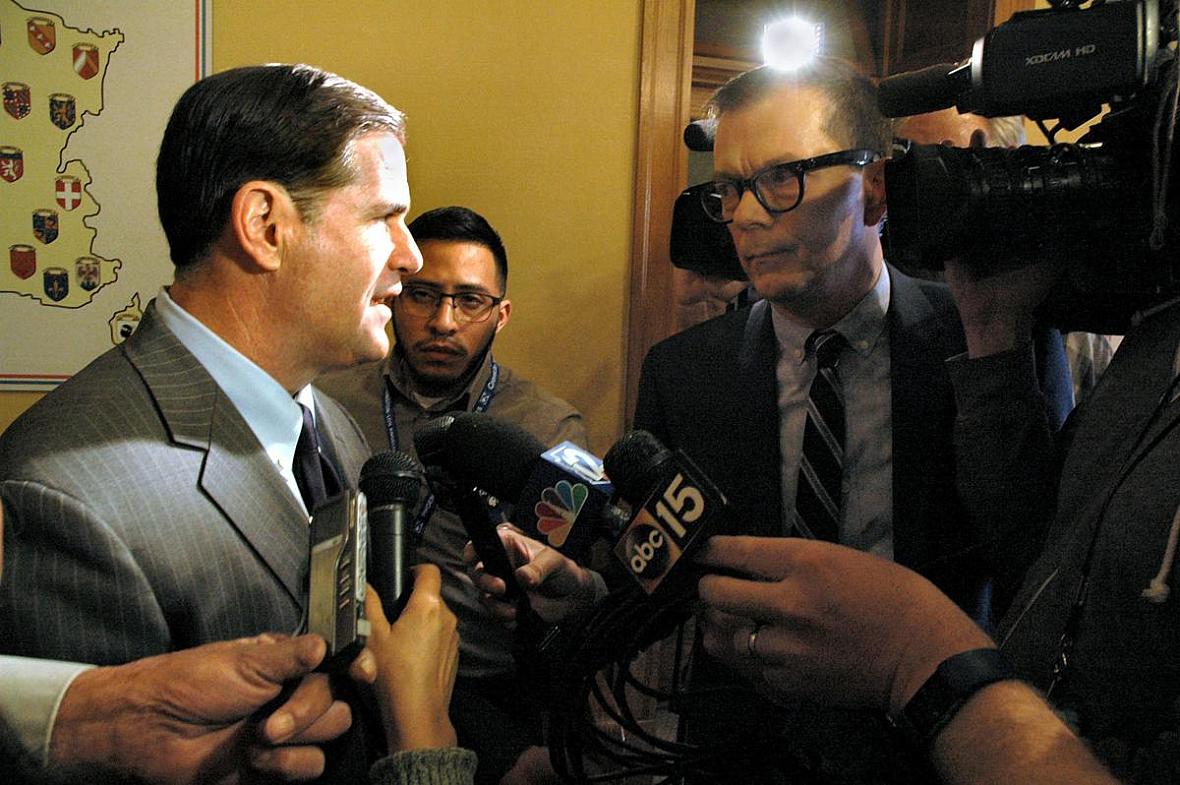Addiction underlies most abuse, neglect cases
"Fixing our foster care crisis” was made possible through major funding from the Community Foundation for Southern Arizona and additional support from the University of Southern California Annenberg Center's Fund for Journalism on Child Well-being.
Other stories in the Part 1 series include:
Part 1: Arizona Daily Star special investigation: Fixing our foster care crisis
Upfront investments can ward off 'horrible outcomes'
Scramble for social services draining for families already under stress
Negative cycles broken as families learn better ways to cope
Supporting families so kids aren't pulled from home
Map: Search Pima County zip codes to see areas of high distress, DCS calls

Gov. Doug Ducey takes questions after signing into law major changes in Arizona laws dealing with opioids.
When it comes to preventing child abuse and neglect, and addressing family dysfunction, few issues are as critical as addiction.
Substance abuse creates a chaotic and sometimes frightening family dynamic that can do lasting harm to children, said Becky Ruffner, director of Prevent Child Abuse Arizona.
Helping the whole family is essential because the person in recovery needs to be supported, and issues that have troubled the family need to be changed.
About 70 percent of the abuse and neglect cases that came through the Pima County Juvenile Court Center in 2016 involved substance abuse, court data show, while mental health challenges among court-involved families rose 52 percent from 2008 to 2016.
People working in addiction-recovery in Pima County would like to see more family-centered help, as well as more medication-assisted treatment. In the case of opiate addiction, for example, this would mean the recovering addict might use naltrexone or methadone, drugs that are called "opioid antagonists" because they block the opiate high and help reduce cravings.
Other recommendations include greater access to individual and group therapy to prevent relapse and address underlying issues.
Gov. Doug Ducey signed the Opioid Epidemic Act in January, which earmarks $10 million more for addiction treatment statewide. It also expands access to opioid antagonists and establishes a Good Samaritan law, which will shield people from prosecution for drug possession when they call for help.
Roughly 44 percent of Arizona's 455 babies who showed signs of drug withdrawal between mid-June 2016 and early January 2017 were found to have methadone, suboxone — another opioid antagonist — as well as physician-sanctioned pain medications in their systems. The most common substance found after that was methamphetamine, at 30 percent, and then heroin, at 25 percent.
The family drug court at the juvenile court center has started doing more to help both parents and their children, including more parent-child psychotherapy.
Too often, parents abuse drugs or alcohol because "it's the only way they know how to cope," said Commissioner Susan Kettlewell, who has presided over the family drug court for more than five years. It's critical to address not only the addiction, she said, but the reason a parent is using drugs.
[This story was originally published by the Arizona Daily Star.]

